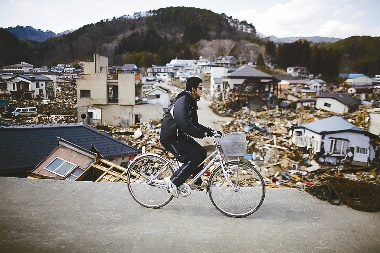 Japanese engineers struggled on Sunday to pump radioactive water from a crippled nuclear power station while the United Nations’ chief nuclear inspector said the crisis triggered by this month’s earthquake and tsunami was far from over. Radiation levels in the sea off the Fukushima Daiichi plant rose on Sunday to 1,850 times normal just over two weeks after the disaster struck, from 1,250 on Saturday, Japan’s Nuclear and Industrial Safety Agency said. The radiation particles will be dispersed and diluted, however, posing no threat to marine life or food safety, a senior agency official said. “There is no need to worry about health risks,” Hidehiko Nishiyama said. The crisis at the plant, 240km north of Tokyo, has overshadowed a relief and recovery effort from the magnitude 9.0 quake and the huge tsunami it triggered on March 11 that left more than 27,100 people dead or missing in northeast Japan. Yukiya Amano, the director general of the U.N. International Atomic Energy Agency (IAEA), cautioned that Japan’s nuclear emergency could go on for weeks, if not months more. “This is a very serious accident by all standards,” he told The New York Times. “And it is not yet over.” Amano, a former Japanese diplomat who visited Japan after the quake, said authorities were still unsure about whether the plant’s reactor cores and spent fuel were covered with the water needed to cool them. He told the newspaper he saw a few “positive signs” with the restoration of some electric power to the plant. But he said: “More efforts should be done to put an end to the accident,” while adding he was not criticizing Japan’s response. The Japanese government estimated last week the material damage from the March 11 catastrophe could top US$300 billion, making it the world’s costliest natural disaster. In addition, power cuts have disrupted production while the drawn-out battle to prevent a meltdown at the 40-year-old plant has hurt consumer confidence and spread contamination fears well beyond Japan. In Tokyo, a metropolis of 13 million, a Reuters reading on Sunday morning showed ambient radiation of 0.22 microsieverts per hour, about six times the normal number for the city. That was well within the global average of naturally occurring background radiation of 0.17-0.39 microsieverts per hour, a range given by the World Nuclear Association. The government has prodded tens of thousands of people living in a 20-30 km zone beyond the stricken complex to leave. Edano said the residents should move because it was difficult to get supplies to the area, and not because of elevated radiation. Kazuo Suzuki, 56, who has moved from his house near the plant to an evacuation center, said neighbors he had talked to by telephone said delivery trucks were not going to the exclusion zone because of radiation worries. “Goods are running out, meaning people have to drive to the next town to buy things. But there is a fuel shortage there too, so they have to wait in long queues for gasoline.” Radiation levels at the evacuation center were within a normal range of about 0.16 microsievert, according to a Reuters Geiger counter reading. In Japan’s northeast, more than a quarter of a million people remain in shelters, and the impact on livelihoods of fishing communities is becoming clearer. (SD-Agencies) | 
